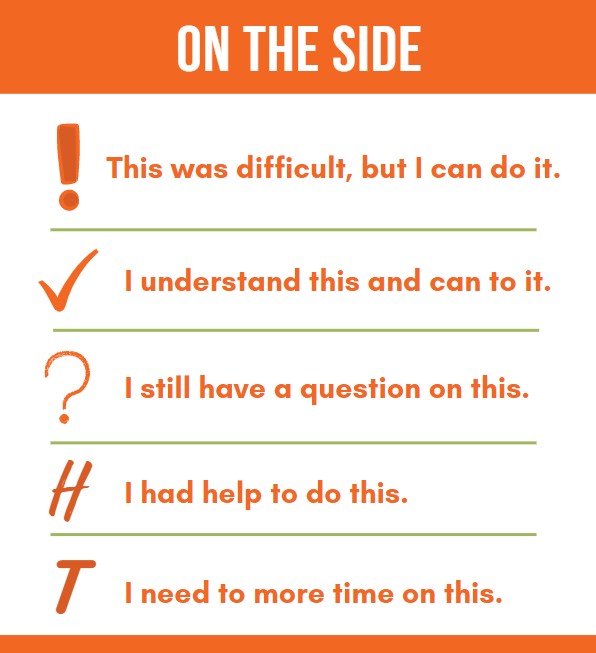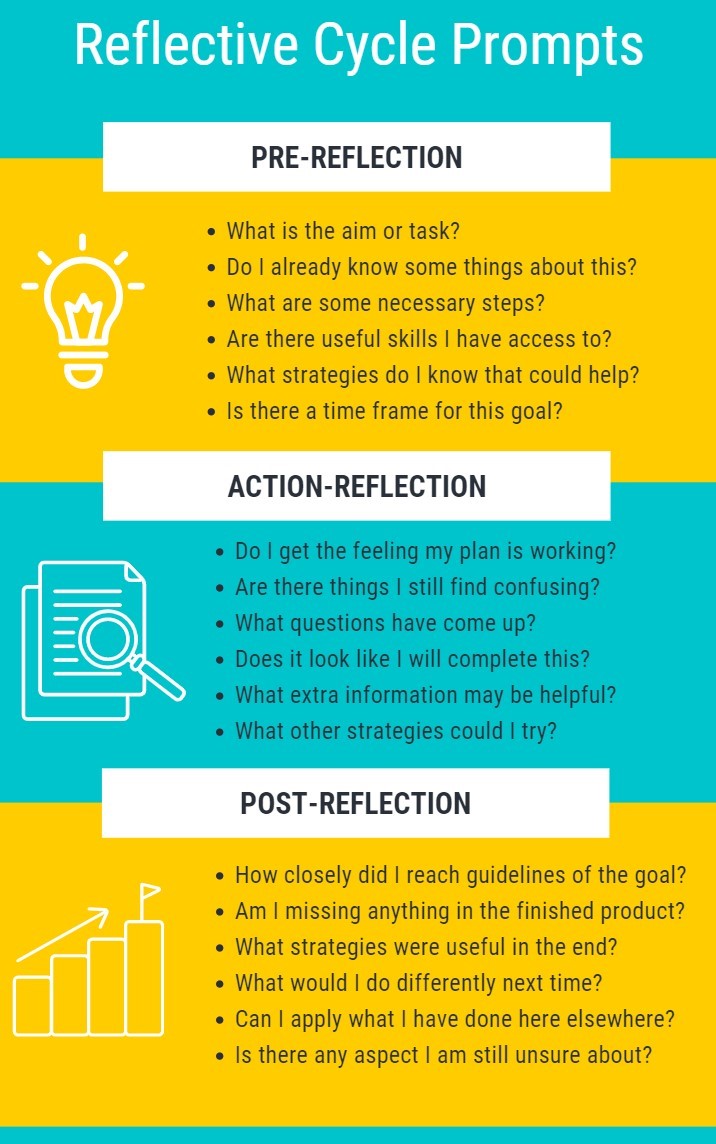6 Reflective Activities
Now that we have some direction for implementing and improving reflective practice—a series of prompts for all occasions (not exhaustive of course, feel free to reinvent and add your own touch)—let us examine some ways in which to use prompts and other reflective activities. There are many educational books already covering the subject of reflective practice; however, in my searchers, the results appear to be written with mostly the educator in mind as the reflective practitioner, not the student. Also, these texts (like a lot of the research) appear to do so without consideration for technology, as most suggest the popular, but technologically limited reflective practice of pen-and-paper “journaling.” However, the use of technology and various media for reflection will be the subject of the next chapter; for now, let us investigate some suggestions for getting students reflecting.
Many of the following ideas for incorporating reflection come from two sources that I found had the most bang for my buck—although I have jazzed them up a bit.44,45 And while some of them may be recognized as simple, tried-and-true pedagogical techniques, others may represent an angle of reflection not considered in your practice to this point.
~5min Reflections
On the Side
The simplest way to start students’ reflecting without overwhelming them or turning off motivation is to get them working in the margins of their work. While some students may have already developed this method through personal strategy development, it can be scaled-up to include codes that identify specific reflection without asking for a lot of writing. Here are some suggestions for you to build from:

Example of a student with unprompted margin reflections

Quick Think
These are short (a couple sentences) reflective opportunities using a prompt, which could be easily added as a Pre-Reflection component to an entry slip, Post-Reflection to an exit slip, or mid-activity as Action-Reflection.

Tweet It Out
Not necessarily connected to social media, this activity works by confining students to a word limit, forcing deep reflection on the essential components (if summarizing an idea) or in the clarity of word-choice (if addressing their learning cycle). This could be modified for any point in The Reflective Cycle and could also be made into a more complex reflective activity by having students first bullet-points the essentials, then moving through one or two drafts to show how communication can be improved.
Example of a student attempting a Tweet It Out (first draft)
Tweet It Out: Explain the strategy(s) you use to create a model of an atom.
First we always have to have our periodic table because that tells us how to find the stuff we need for building atoms. Because we know atoms are neutral you have to remember that because it helps you know the protons and electrons are the same. The atomic number is the number on the top and is how many protons to add to the middle and electrons around it. The neutrons you have to find by doing math subtracting protons from the mass number.
~10min Reflections
Pick One
This is a longer version of a Quick Think with loads of potential variation. Guide students to select one idea or concept from the learning, a key sentence from the reading, or perhaps just a single term as a prompt for deep reflection. Students could reflect on their understanding of the selected item, on its importance to the overall learning, or on their personal experience, connection, or interest.
Mapping
Simple concept-mapping may be overlooked as a method of reflection; however, it requires students to make a visual representation of connected ideas and allows for a different style of reflection that students may appreciate over traditional writing. While typically used for mapping related curricular content, consider how it could be used at any point in The Reflective Cycle to help organize strategies for learning or plans for a larger goal.
Re-Read
Having students reread past reflections to build on knowledge, skills, or strategies, illustrates the recursive nature of the reflective process. This activity can be done using any past reflection with a general connection to be revisited or stacked more specifically as a Pre-Reflection activity followed the same class or the next class as a Post-Reflection follow-up.
+20min Reflections
What If
This activity requires a little more depth of thought from students. Whereas many educators live in anecdotes, analogies, and metaphors, students may find it difficult to create their own. This could be used for content as Action-Reflection, having students reflect on aspects of material to create an analogy or metaphor. It could also be employed as Post-Reflection on the learning process, by having students reflect on individual strategies or a process they used to create an analogy or metaphor.
Get Real
A specific version of What If, here students are asked to consider the idea, concept, or strategy being developed in class, and find a real world example of its application. This could be educator-initiated, by showing a news clip or video of the concept being applied in life and asking students to reflect, or by asking students to find or create their own real world application or example scenario.
Freestyle
While these reflections could start from one of the prompts, as students get more familiar drawing on their experience, prior knowledge, and learning to create a deep reflection, the Freestyle could be reduced to a one-word prompt. Consider a Post-Reflection Freestyle prompt such as “Reflect on this fractions unit.” A student new to reflection may be overwhelmed; however, after extended practice with some of the activities from our list, students may find this a wonderfully liberating reflection and might mash-up components from past reflective activities (like What If or Mapping).
The list above doesn’t include the mother-of-all reflective activities, the “portfolio.” There are lots of accessible resources that explore the potential of having students create portfolios of selected artifacts, curate resources, and demonstrate reflective thought as a measure of learning. The common understanding of reflection is as a post-event activity and it is common for educators to use these Post-Reflections in assessment situations (as I have done as well). So, while these reflective activities can be included as artifacts in any portfolio, I have decided to not include this avenue of assessment. The prompts listed under Post-Reflection could also be used to create a post-assessment assignment of sorts if one so wishes; however, I will not specifically discuss assessment-based reflections.
BOTTOM LINE
*Dewey (1909), p.3

